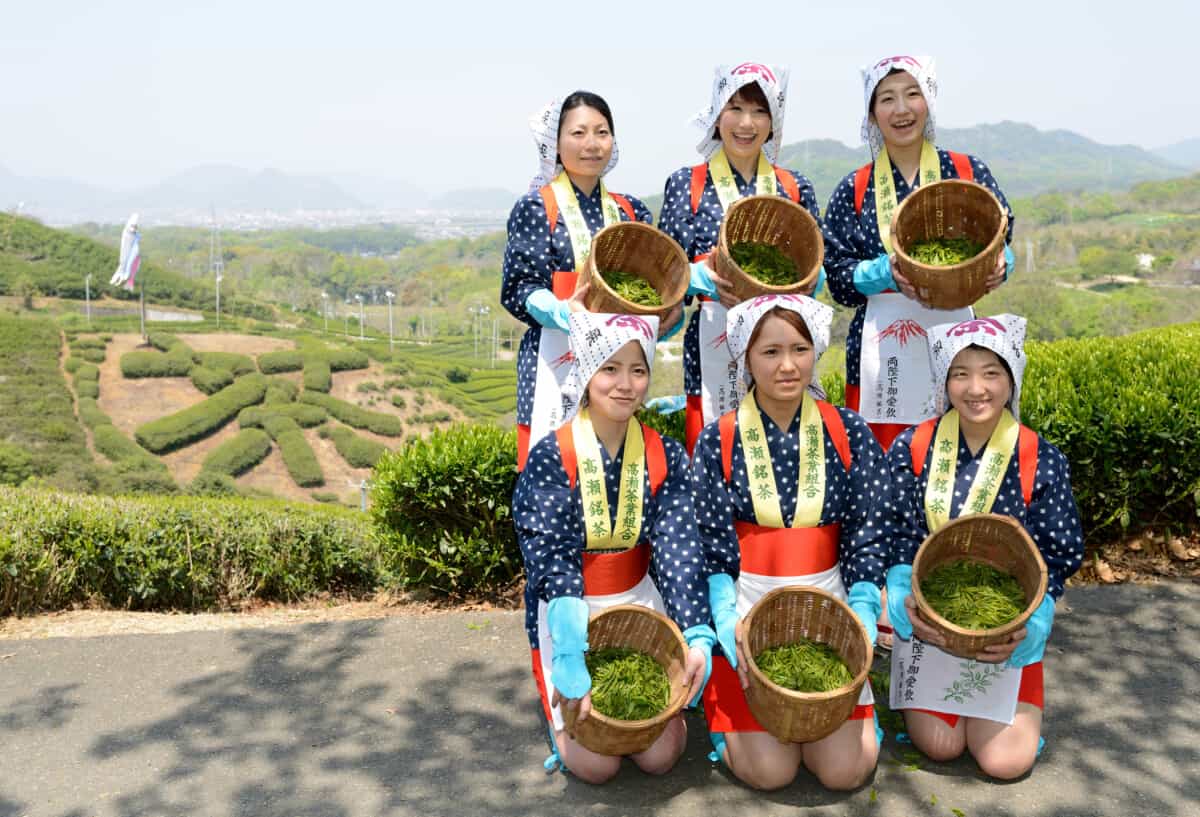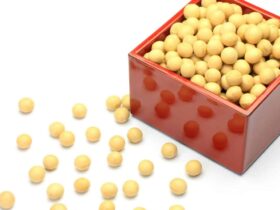Japan has some of the best teas in the world to offer and tea forms an important part of the culture.
In Japan, tea is amongst the most popular drinks consumed. Not only are there many different types of tea sold but they each have their own special meaning, taste, properties and some even have certain times of the day to be consumed.
By far the most popular type of tea in Japan is green tea such that if someone offers you tea, it is assumed to be green tea. Teas are also an important cultural point by their inclusion in tea ceremonies.
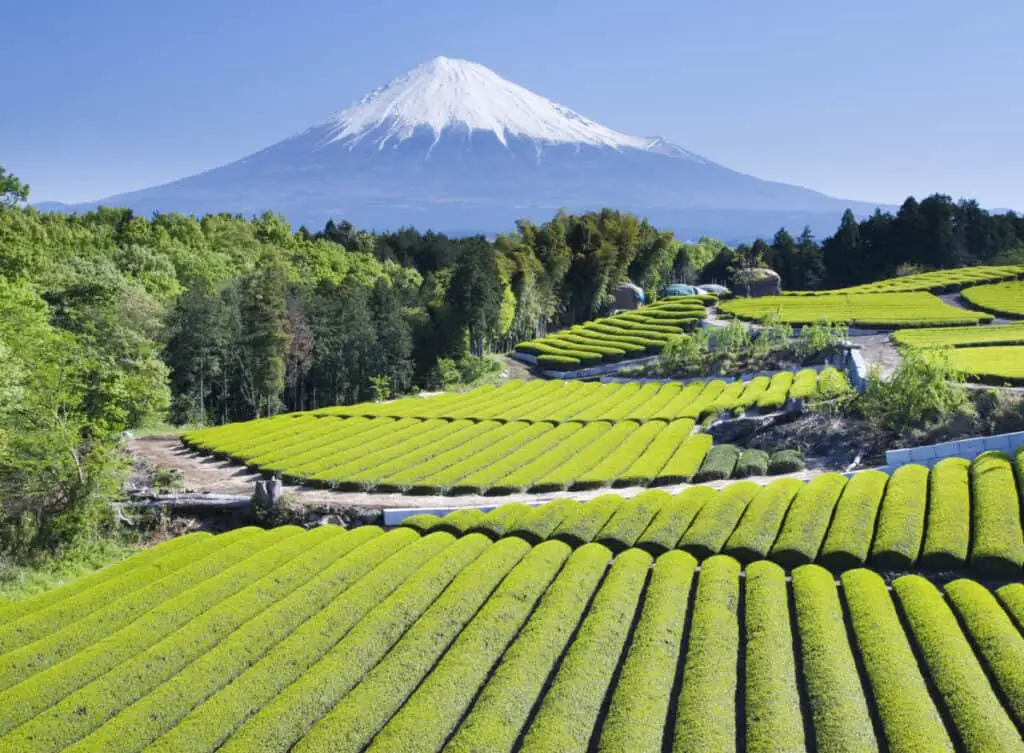
Green tea is the most well-known kind of Japanese tea. It is Japan’s most popular beverage, prized for its medicinal and rejuvenating qualities. Green tea consumption is embedded in Japanese culture, with practically every meal in Japan being accompanied by a freshly made pot of green tea.
Matcha vs Green Tea
Green tea, which is made from steeped tea leaves, has a mild, grass flavor and is high in vitamins, minerals, and antioxidants. Matcha is a powdered form of green tea leaves ground into a fine powder that has a higher concentration of certain minerals and antioxidants.
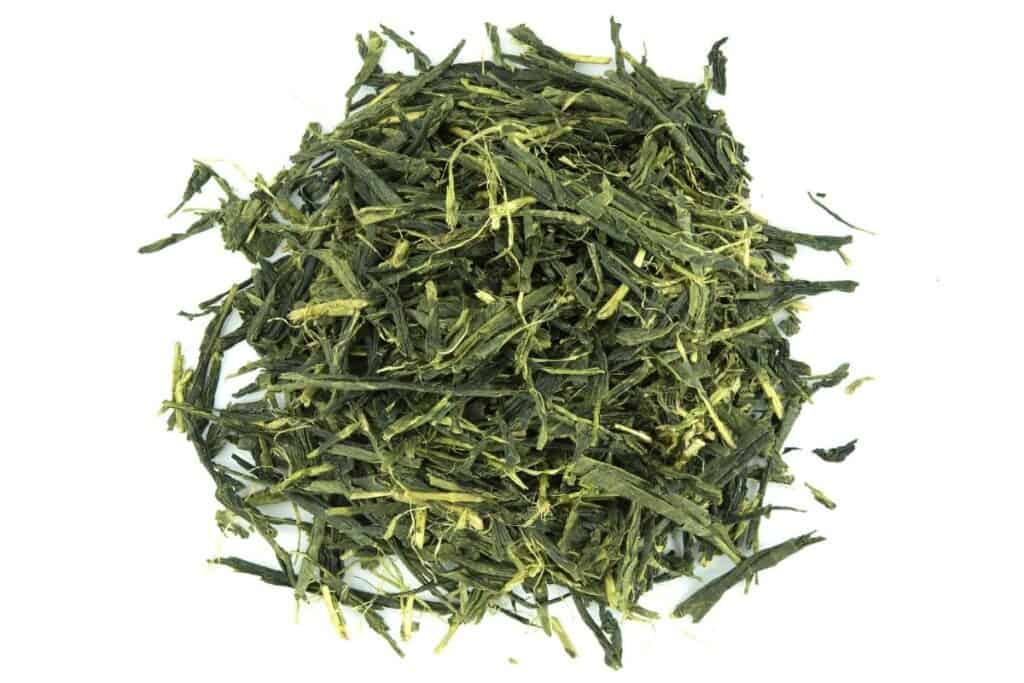
Green tea is produced from Camellia sinensis leaves and buds that have not been subjected to the same drying processes as black teas. Green tea started cultivation in China, and its production has subsequently extended to other East Asian countries and specifically Japan.
Matcha is Japan’s earliest known tea, having been brought to the country by Buddhist monks from China in the latter part of the 12th century. The powdered tea practice faded in popularity in China soon after, but it persisted in Japan, eventually resulting in the cultural practice of the Japanese Tea Ceremony.
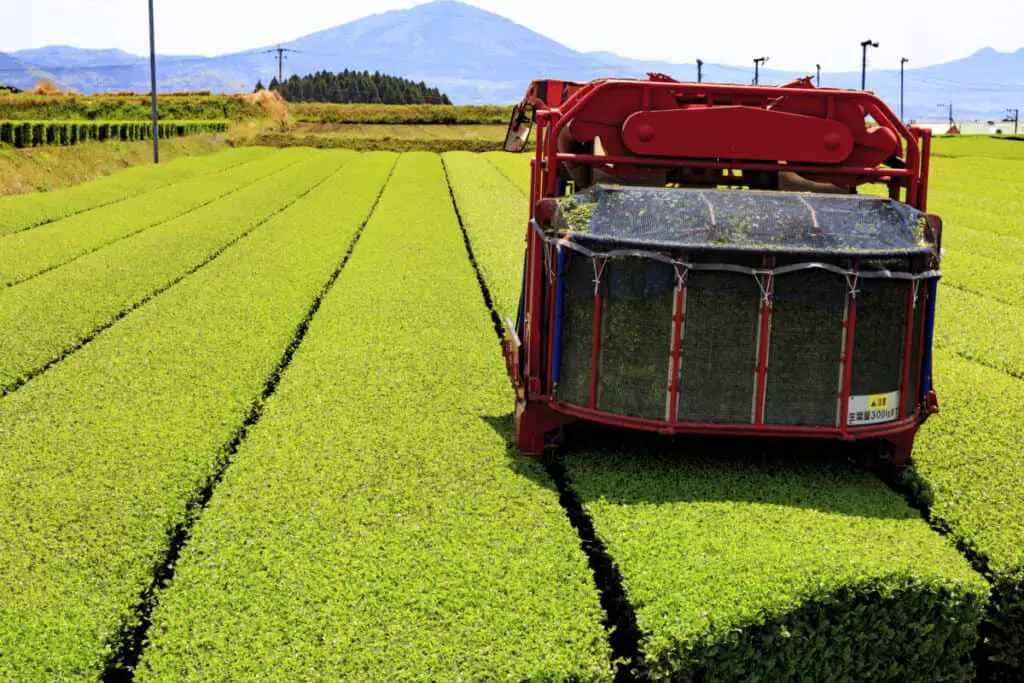
So, to give you a better understanding of the tea culture in Japan, where we’ll explore some of the best types of tea that Japan has to offer.
“Kill Green” Step Of Production
The “kill-green” step in preparing green tea is accomplished by either pan-frying or boiling/steaming the fresh tea leaves. For the great majority of Japanese green teas, steaming is the favored technique.
Teas Made From The Plant Leaf
Matcha
Chances are that you have already heard of matcha, and for a good reason. Matcha is an incredibly popular tea in Japan, but it can be found not only in drink form but it is also used to flavor foods and many desserts and sweets.
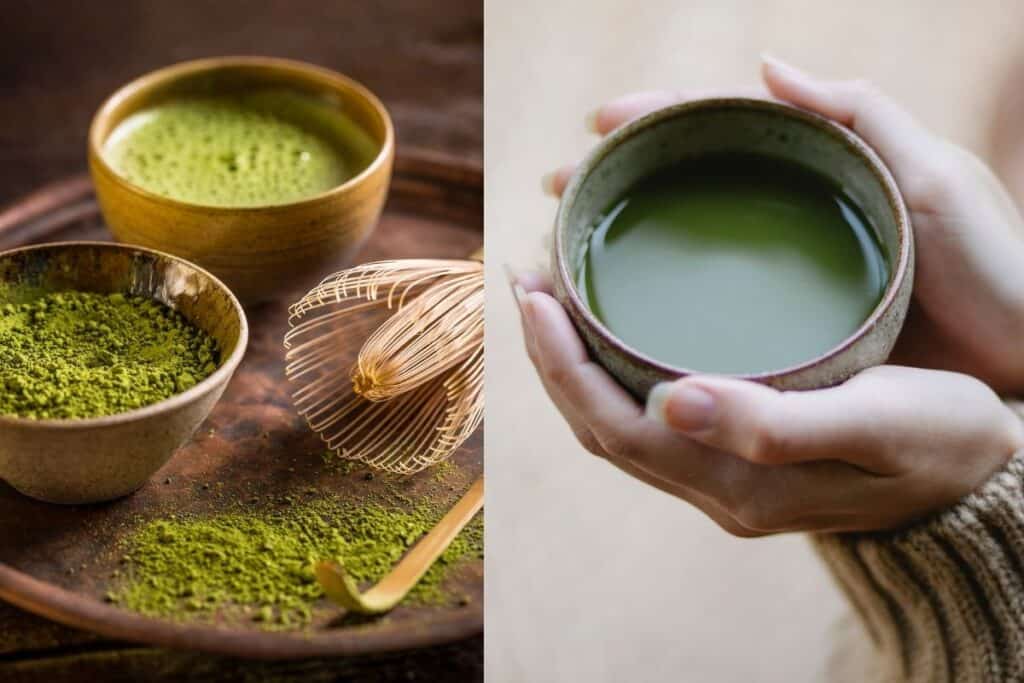
Matcha is created from tea leaves that were shaded for two to three weeks before being collected from each plant, then the leaf is steamed, deveined, destemmed, and dried then crushed into a fine powder.
Matcha is made using only the best leaves of the tea plant which are then ground into a very fine powder. This powder is then mixed with boiling water to make the tea. This type of tea is the one used in most tea ceremonies.
Ryokucha
Also known as “green tea”, ryokucha comes in several forms dependant on factors such as the time of harvest, the amount of sunlight that the plant gets, and a few other factors.
The first main type of ryokucha is called gyokuro and this is the very highest grade. This type of tea is the first to be picked during the harvest and it also is hidden or covered from direct sunlight just before being picked.
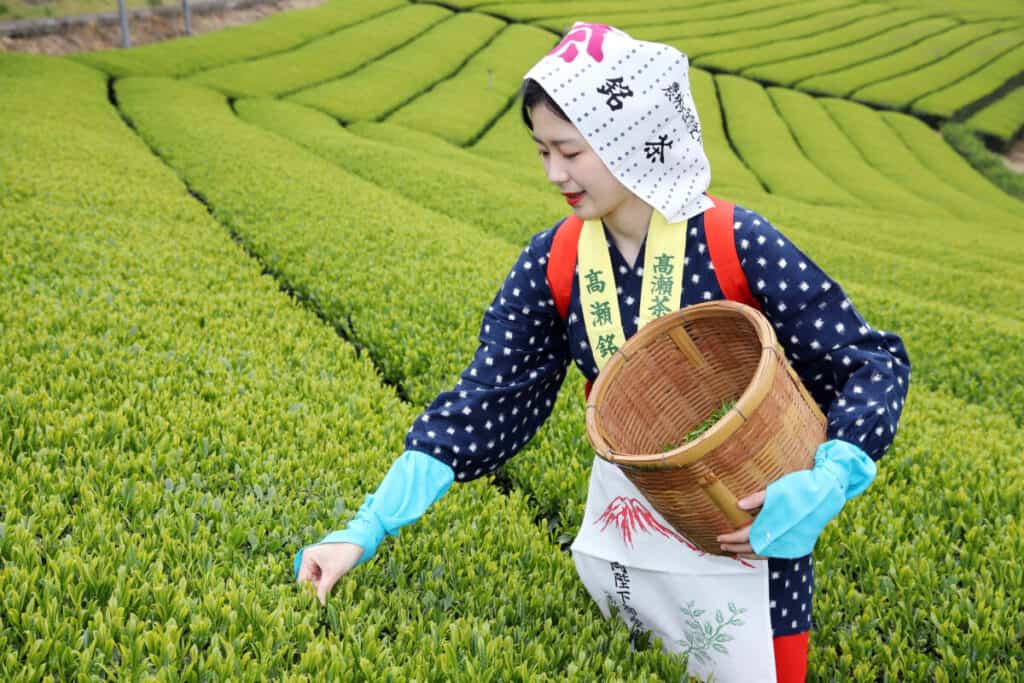
The second type of green tea is sencha. Just like gyokura, the leaves are harvested during the first round but this type of tea’s leaves are not protected from the sunlight.
The third and final type of green tea is known as bancha. These leaves are harvested last and it is the lowest grade of green tea.
Hojicha
Hojicha is a type of aromatic tea that gets its distinctive flavor from the processing of the leaves. This is a type of green tea that is roasted for flavor. By roasting the leaves they gain their characteristic brown-red color as well as a sweet, light caramel-like taste when brewed.
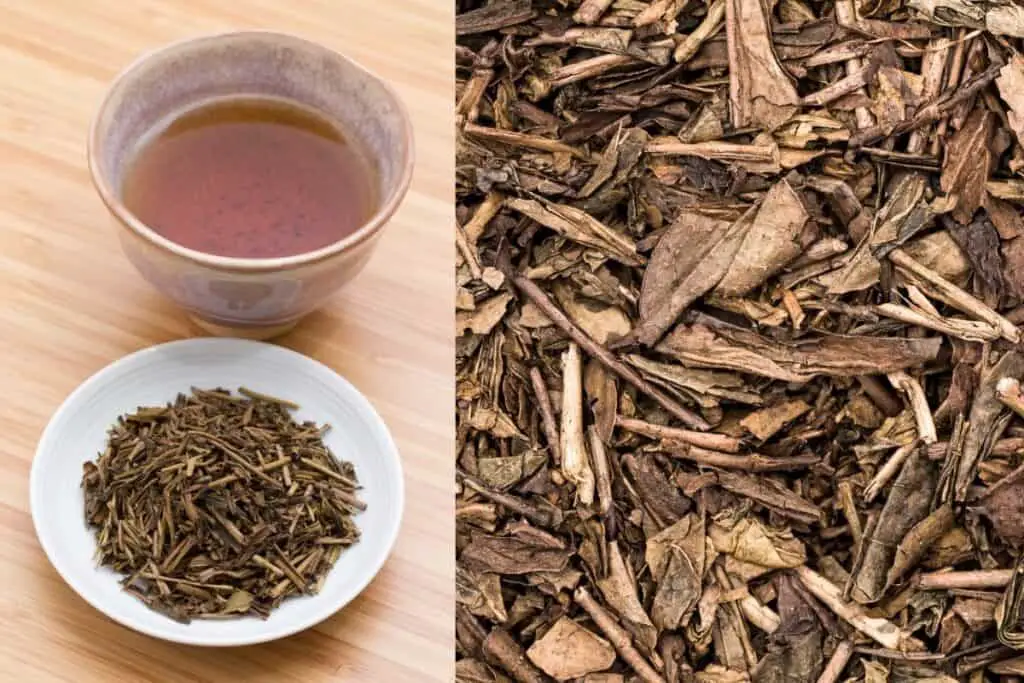
Hojicha is still a green tea because it was not oxidized and went through the “kill-green” method. It gets its caramel or brownish color from the roasting process.
Hojicha is usually prepared from bancha or kukicha leaves, and it can be roasted to different degrees depending on the Tea Master’s liking. Hojicha has a robust, earthy flavor rather than the grassy flavor of other loose leaf green teas.
Jasminecha
Jasmine-cha is a tea that is made by adding jasmine flowers to another type of tea such as green tea or an oolong base. This type of tea is most popular in Okinawa where it is normally referred to as sanpincha.
Early in the spring, tea leaves are gathered and kept until late summer, when new jasmine blooms emerge. Early in the day, while the little petals are securely closed, jasmine flowers are harvested. Jasmine blooms unfold at night, producing their scent.
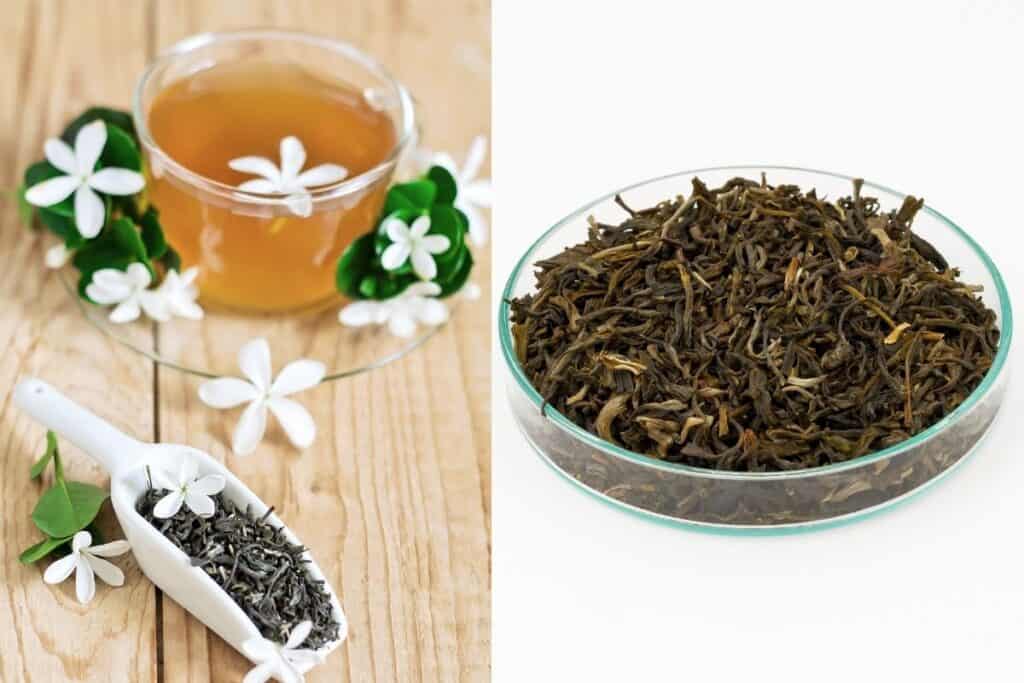
This is the time when the tea is infused. There are two major ways of integrating jasmine into the tea. The tea and flowers are layered in one way, while the tea is mixed with jasmine flowers and preserved overnight in the other. The tea takes almost four hours to absorb the jasmine blooms’ scent and taste.
However, if this is your favorite type of tea then you may be disappointed to know that it is not as common in the other regions of Japan.
OolongCha
Oolong cha is a form of Chinese tea. Again, all of the flavors and other distinct characteristics of this tea come from the processing of the tea leaves. Here the leaves are left to oxidize before they are either roasted or steamed. By heating up the leaves the oxidation process is halted.
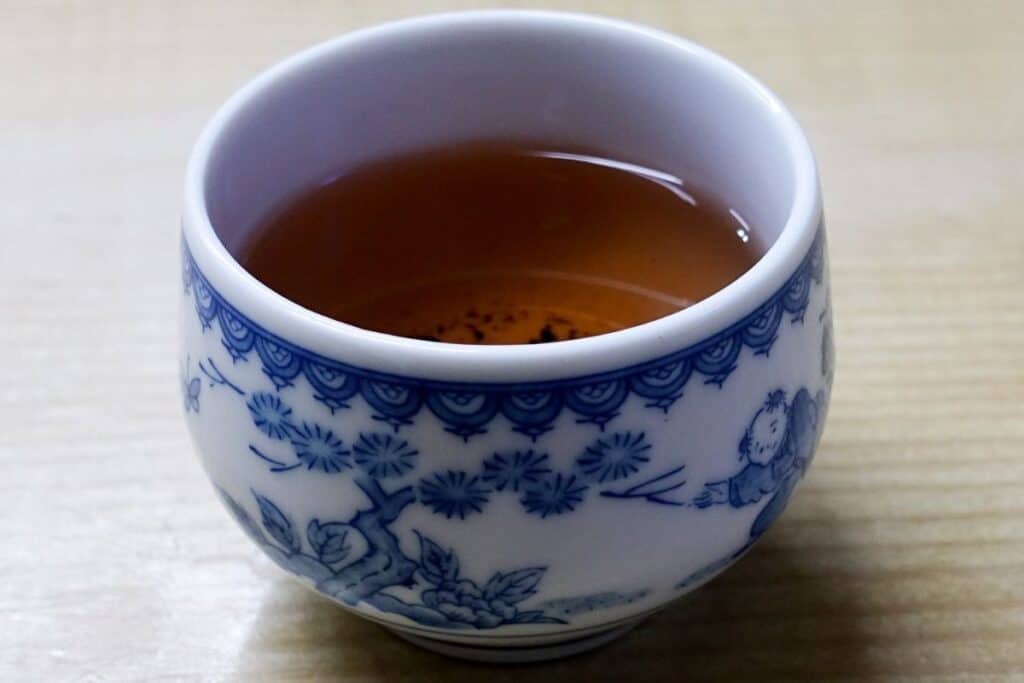
This type of tea is very common across Japan and can be ordered in most Japanese restaurants. You can choose to have it served either hot or cold depending on your preference.
The majority of oolong teas, particularly those of high grade, employ distinct tea plant cultivars that are only used for certain types. The degree of oxidation varies depending on the time spent before firing and might range from 8 to 85 percent.
This tea is simply brown in its coloring but has a lot to offer in terms of its taste.
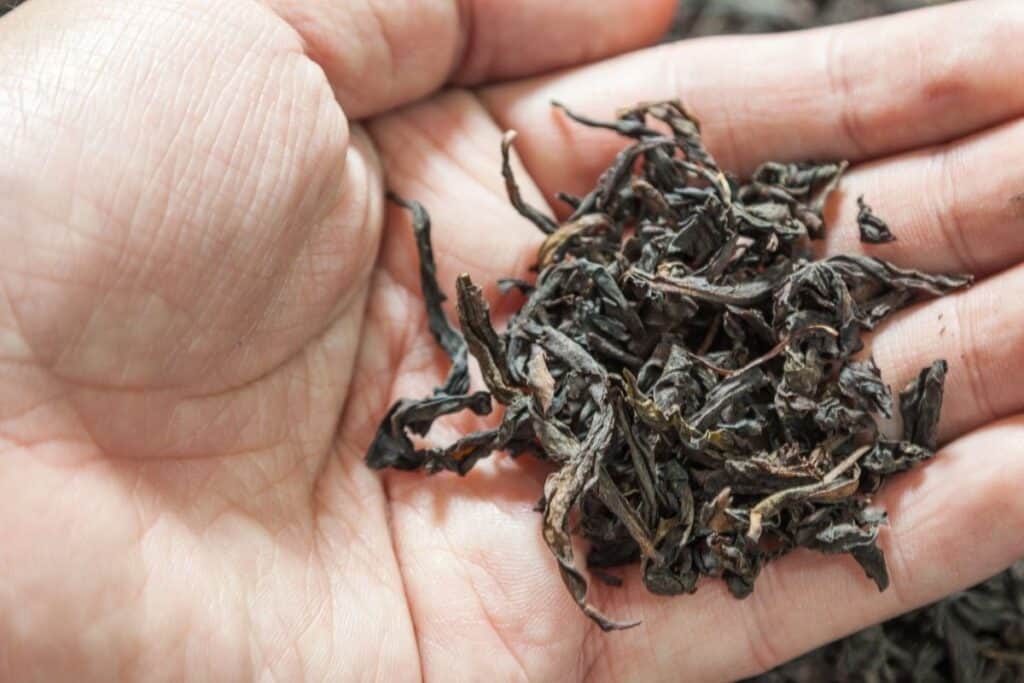
Kocha
Kocha is a black tea that is processed using a similar method to Oolongcha. However, Kocha is left to oxidize for longer. This longer process results in a very dark color of the tea leaves. The tea actually gets its name “kocha” meaning red tea, from the red-brown color that the oxidation process creates.
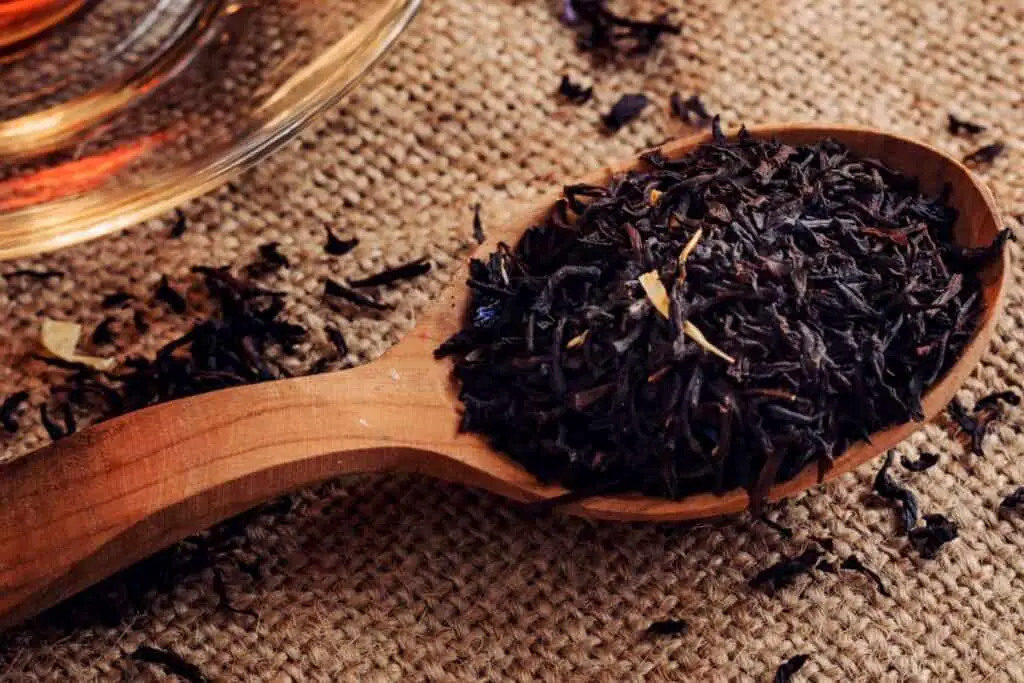
If you are looking for Kocha then head to almost any restaurant or izakaya and you will normally be able to find this on the menu.
Konacha
Konacha is another type of green tea, but one that is of a much lower grade. This is because the tea is made using tea dust, the remaining small leaves from making other types of tea and tea buds. Despite its grade, the taste of Konacha is said to pair well with many types of food such as sushi.
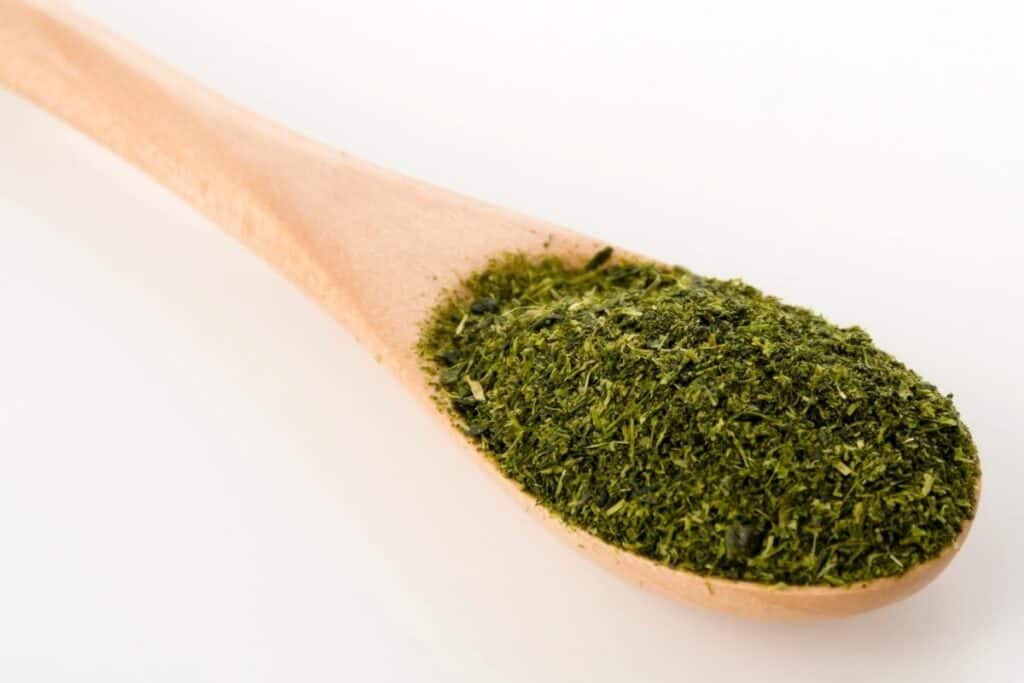
Small fragments of leaves are filtered away during the processing of gyokuro and sencha to make konacha (powder tea).
Konacha isn’t powdered like matcha or funmatsucha, despite the fact that it literally means “powder tea.”
Konacha has a bright green hue and a strong flavor when brewed.
Because the components of green tea dissolve fast in water due to their small size, the brewing time should be kept short to avoid an overwhelming flavor.
In fact, in many sushi restaurants, you can typically serve yourself this type of tea at each table.
Teas Made From Other Than Tea Leaves
Mugicha
Mugicha is the term for barley tea. The tea is made by the infusion process of putting barley into water. This type of tea is particularly popular during the summer when it is served cold as a refreshing beverage.
Boiling roasted unhulled barley kernels in water or brewing roasted and ground barley in hot water can be used to make the tea. During the early 1980s, tea bags with pulverized barley became more popular than conventional barley kernels in Japan, and they are still the standard today.
Many people also give this type of tea to younger children as there is no caffeine in it.
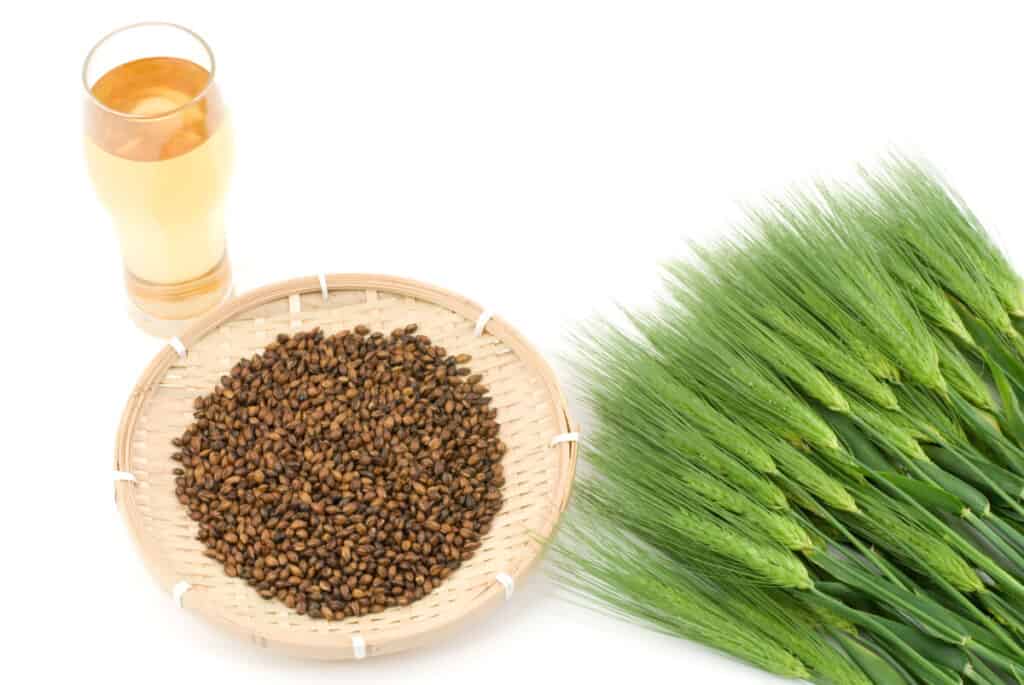
Kombucha
Made from kelp, Kombucha is made by steeping the kelp seaweed, Kombucha has a mildly salty taste and is very popular at ryokans. (not to be confused with the fermented drink sold in the west)
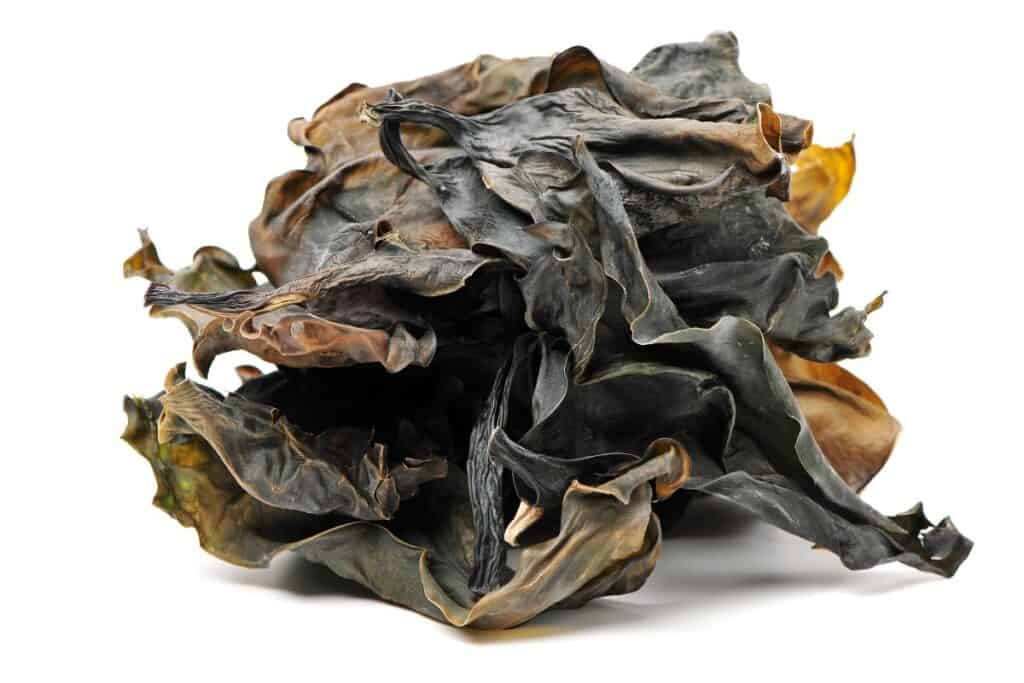
Kombu Cha, which basically translates as “kombu kelp tea,” is a tea brewed from kombu seaweed. After drying, the kombu is usually chopped into small pieces or crushed into powder.
In its most basic form, boiling water is poured over freshly dried and crushed kombu, a pinch of salt may be added, and the tea is served. The white powder on the seaweed is what dissolves in the water and imparts an umami taste to the tea.
Thoughts On Japanese Teas
Japan is one of the top spots in the world to consume tea. Not only does it make up an important part of their culture but there are also many different types of tea.
This means that there is a type of tea to suit everyone’s taste no matter whether you like green tea, black tea, a roasted aromatic form of tea, flower-infused tea, or even a non-caffeinated tea.
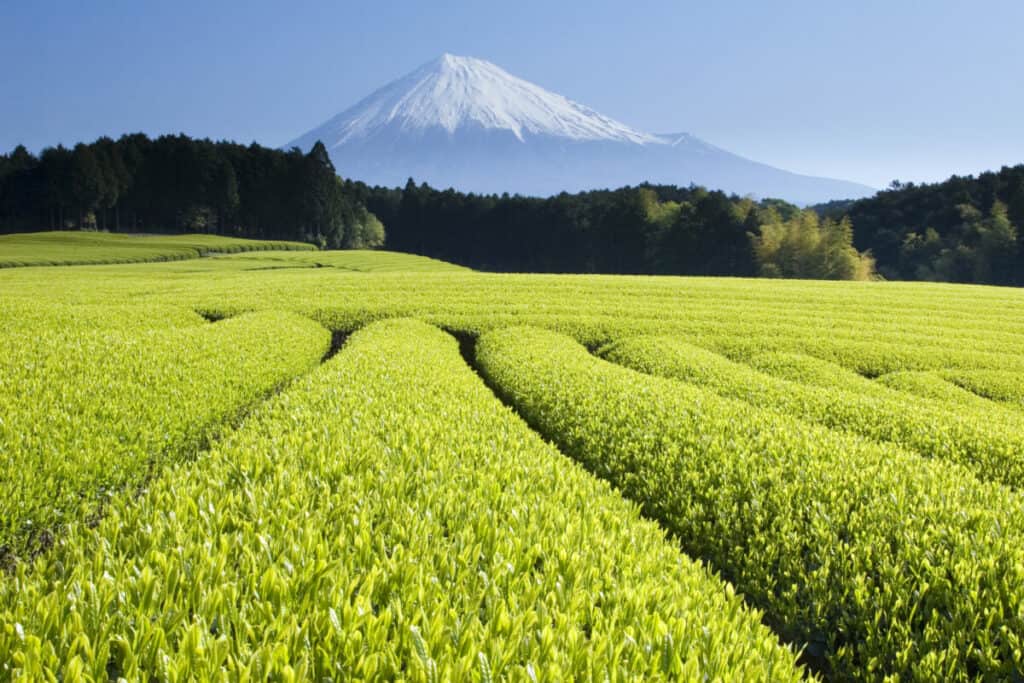
By understanding the different types of tea from Japan, which ones are consumed during tea ceremonies as well as which teas are more popular in certain regions not only can you get an appreciation for the many flavors available but also the cultural significance of certain types of tea.
So, whether you are traveling to Japan, or you simply want to understand more about the tea culture there and maybe try them for yourself at home, the above guide should provide you with basic information about the most popular types of teas made in Japan.
Japanese Tea Documentary (English Subtitles)

